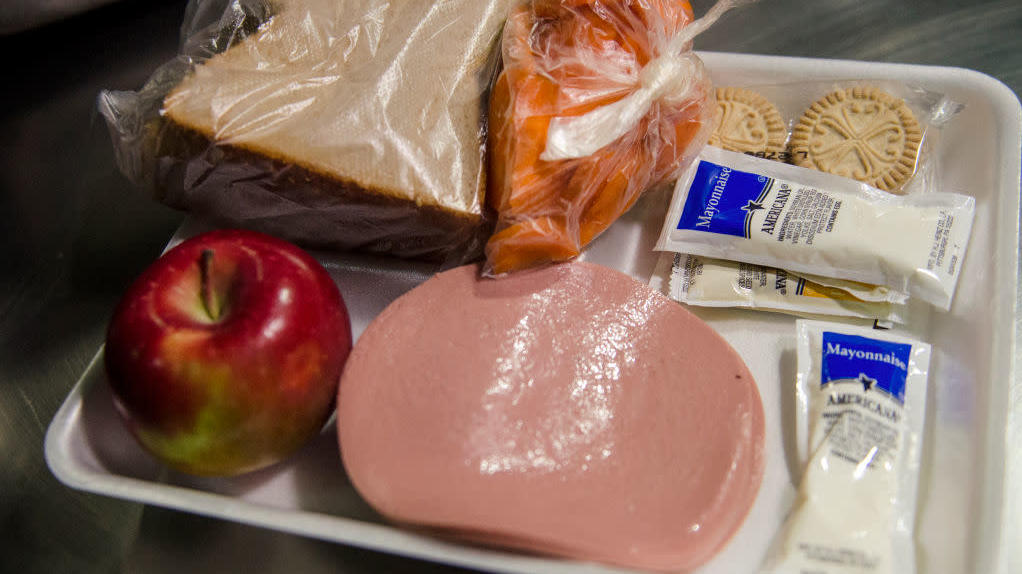Why Prisons Need Better Food
The legend of my college dining hall (and maybe yours, too) was that the food they served us was one grade above prison food. Allegedly, the food company the university used had six or seven grades. Prison food was grade one. The undergraduate dining halls were grade two. The business school was grade three or four. The banquets in the convention center were grade six (or seven, whichever the top level was). No one ever bothered to look into this rumor. It was simply passed along as fact by RAs during New Student Week. But I do have to say, there was a lot of food, including a salad bar, and if we didn't feel like eating it, we could always go into town or sneak into a lecture or some other event for the free pizza.
Yes, we were stupid and privileged (and also bad journalists). An op-ed from yesterday's New York Times describes in vivid detail just how bad prison food actually is, and how it's gotten worse during the pandemic. Many states, the Times explains, spend less than $3 per inmate per day, resulting in a diet that is high in refined carbohydrates, sugar, and sodium and low in basic nutrients. According to research by the advocacy organization Impact Justice, many inmates don't even get that because they chuck their trays into the trash to avoid the spoiled food that's on them. "Consider eating ground-up gym mat with a little bit of seasoning," one inmate described it to the Times. An experiment by one advocacy group showed that prison bread doesn't mold and prison cheese doesn't melt.
You could argue that eating (or not eating) lousy prison food is part of paying off one's debt to society. But that's not necessarily the case. The Times explains:
Though the average American rarely spends time worrying over how incarcerated people are being treated, their physical, psychological and emotional health has a ripple effect on all of us, especially after they serve their time. If the goal of prison involves not only punishment but also rehabilitation and lowering recidivism, then sending a healthier person back into society is in everyone's interest.
A hungry and unhealthy person is unlikely to take much interest in improving their life and behavior. Plus, somebody has to pay for treatment for malnutrition and other diet-related chronic conditions like heart disease and diabetes, and that person is going to be you, the average taxpayer.
Mountain View Correctional Facility in Maine has decided to try a different strategy: turning the prisoners into farmers and bakers who will grow and prepare their own food. The prison facility has a 750-tree apple orchard and a three-acre vegetable farm. What the prison can't produce on its own, it will buy at low cost from local farmers and other sources.
Other prisons across the country have been experimenting with smaller initiatives, like replacing canned vegetables with fresh, buying surplus catch from fishermen (which, in pre-COVID times, went to restaurants and schools), and organizing cookouts so inmates could learn how to prepare meals for their visitors.
Many prisoners never learned about basic nutrition before they were incarcerated; many grew up in food deserts where cheap junk food is all that's available. If they're doing their time, shouldn't we afford them the resources to take better care of themselves? The Times piece raises a lot of important questions about how the state cares for inmates.
As Dr. Shira Shavit, executive director of the Transitions Clinic Network, a constellation of 44 health clinics for formerly incarcerated patients, explained: "It's a missed opportunity. It's yet another example of how we don't prepare people to come back to the community."
